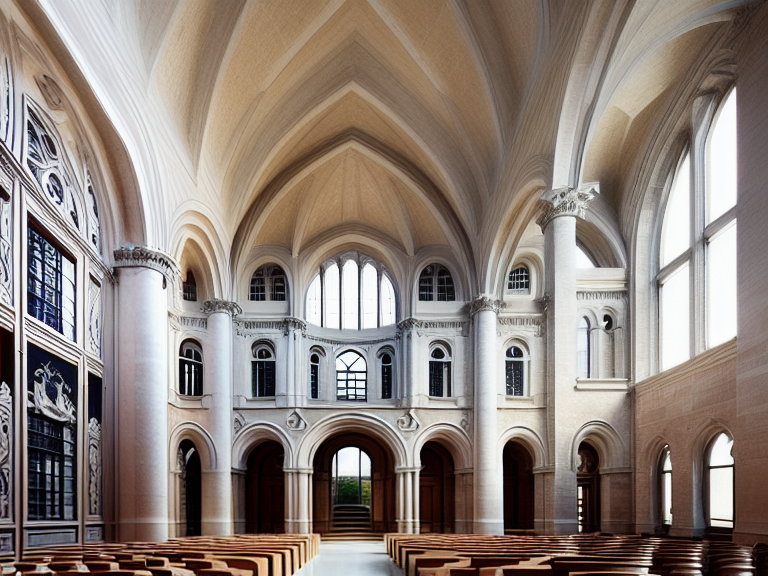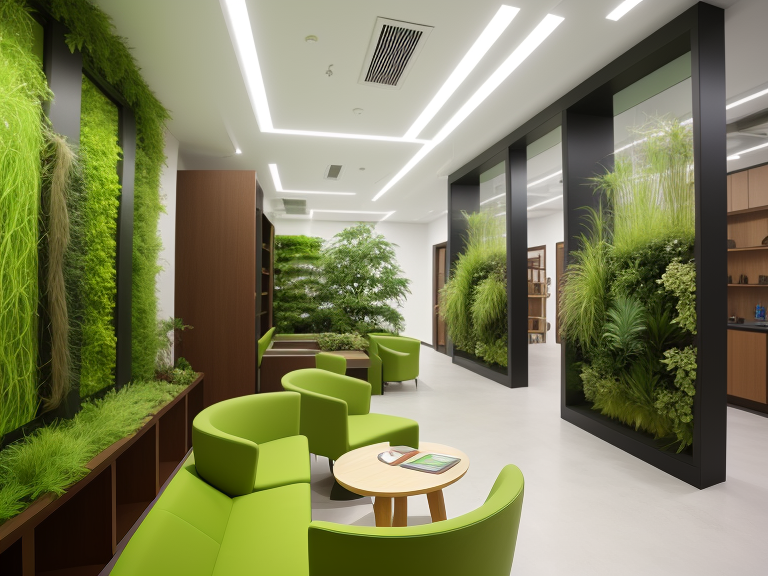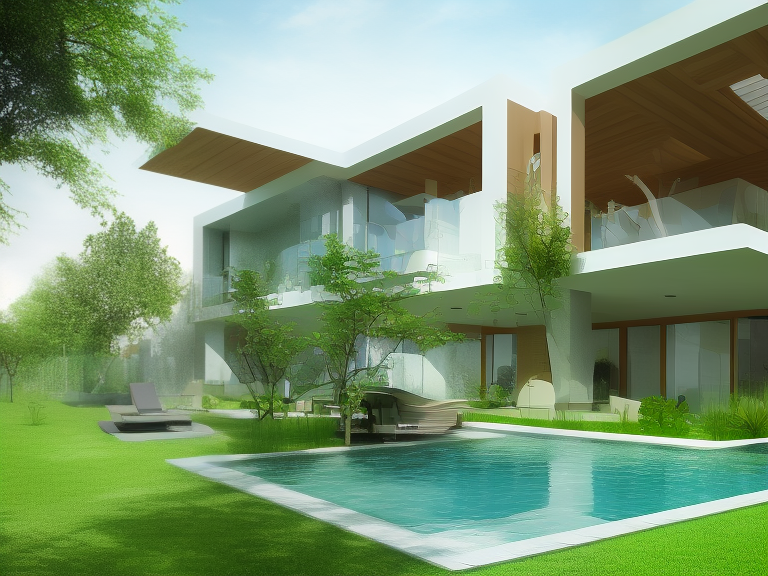Transforming historical buildings with contemporary designs demands a thoughtful fusion of cultural heritage and modern functionality. This delicate balance allows iconic structures to be reinvigorated for future generations. By incorporating innovative materials, sustainable design elements, and cutting-edge technology, historic buildings can be revitalized while preserving their original character. From adaptive reuse to creative lighting solutions, the possibilities for transformation are vast. As we explore the intersection of past and present, we uncover new ways to revitalize urban landscapes and honor cultural identity – and the journey is just beginning.
Balancing Heritage With Modernity
How can architects and designers effectively reconcile the historical significance of a building with the need to incorporate modern amenities and technologies, while maintaining its original character and charm? This delicate balance is important in transforming historical buildings with contemporary designs. The key lies in embracing cultural fusion, where the past and present converge to create a unique architectural identity.
Architectural evolution is essential in this process, as it allows designers to thoughtfully integrate modern elements while preserving the building's heritage. This fusion of old and new can result in breathtaking transformations that not only respect the original structure but also infuse it with modern functionality. For instance, incorporating energy-efficient systems, sustainable materials, and cutting-edge technologies can greatly enhance the building's livability and functionality without compromising its historical integrity.
Preserving Character Through Restoration
When transforming historical buildings, preserving character through restoration is essential to maintaining their cultural significance. This involves carefully preserving original features that define the building's heritage, while thoughtfully integrating contemporary elements. By striking a balance between old and new, architects can create a harmonious fusion of past and present.
Preserving Original Features
By thoughtfully incorporating modern amenities while preserving original architectural elements, restoration projects can successfully strike a balance between historical integrity and contemporary functionality. This delicate balance is essential in preserving the historic significance of a building, ensuring that its original character is not lost amidst modernization. One of the primary concerns in preserving original features is maintaining architectural integrity. This involves carefully restoring or replicating original materials, textures, and details to preserve the building's authenticity. For instance, preserving original woodwork, moldings, or decorative plasterwork can greatly contribute to the building's historic significance. By doing so, the restoration project can maintain the building's original essence while still catering to modern needs. By thoughtfully preserving original features, architects and designers can create a seamless blend of past and present, resulting in a unique and alluring space that honors its heritage while embracing innovation.
Balancing Old and New
Restoration projects that successfully balance old and new elements not only preserve the historic character of a building but also create a unique, visually striking space that appeals to modern sensibilities. This delicate balance is vital in transforming historical buildings with contemporary designs. By harmoniously blending original features with modern amenities, architects and designers can create a cultural fusion that honors the past while embracing the future.
Some key strategies for achieving this balance include:
- Preserving original materials and textures, such as exposed brick, wooden beams, or ornate plasterwork, to maintain the building's historic integrity.
- Incorporating modern materials and technologies, like energy-efficient systems or sleek glass installations, to enhance functionality and sustainability.
- Designing flexible, multi-functional spaces that can adapt to changing user needs, ensuring the building remains relevant and vibrant for generations to come.
Innovative Materials and Techniques
Contemporary architects are increasingly incorporating novel materials and cutting-edge techniques into their designs, allowing them to reimagine historic structures in innovative ways. This fusion of old and new enables the creation of unique, functional, and sustainable buildings that honor their heritage while meeting modern demands.
One area of significant innovation is in the development of Smart Facades, which integrate advanced materials and technologies to optimize energy efficiency, natural light, and ventilation. For instance, electrochromic glass can change opacity in response to electrical signals, reducing the need for artificial lighting and heating. Similarly, Nano Coatings are being used to enhance building envelopes, providing self-cleaning properties, UV resistance, and improved insulation.
| Innovative Material/Technique | Benefits |
|---|---|
| Smart Facades | Energy efficiency, natural light optimization, ventilation control |
| Nano Coatings | Self-cleaning, UV resistance, improved insulation |
| 3D Printing | Rapid prototyping, complex geometry, reduced waste |
These cutting-edge materials and techniques not only enhance the aesthetic appeal of historic buildings but also improve their functional performance. By embracing innovative materials and techniques, architects can restore and transform historic structures into vibrant, sustainable, and functional spaces that meet the needs of modern society.
Adaptive Reuse of Historic Spaces
Historic buildings, often burdened with outdated functionalities, can be revitalized through adaptive reuse, which breathes new life into these structures by repurposing them to serve modern needs and purposes. This approach not only preserves the cultural heritage of a community but also injects new vitality into the urban landscape. By embracing adaptive reuse, architects and designers can create vibrant public spaces that foster community engagement and celebrate cultural sensitivities.
Some notable benefits of adaptive reuse include:
- Preservation of historical integrity: Adaptive reuse safeguards that the original character of the building is maintained, while still allowing for modern amenities and functionalities.
- Community revitalization: Repurposed historic buildings can become vibrant hubs of community activity, promoting social interaction and a sense of community pride.
- Cultural sensitivity: Adaptive reuse projects can be designed to honor the cultural heritage of the community, incorporating traditional materials, architectural styles, and historical references.
Sustainable Design Elements
Incorporating sustainable design elements into the transformation of historic buildings not only reduces the project's environmental footprint but also enhances the overall aesthetic and functional appeal of the revitalized space. By incorporating green roofs, for instance, buildings can reduce urban heat island effects, manage stormwater runoff, and create habitats for local wildlife. These eco-friendly features not only benefit the environment but also provide insulation, reducing energy consumption and costs.
Vital is another important aspect of sustainable design in historic building transformations. By incorporating energy-efficient systems, such as LED lighting and high-performance HVAC systems, buildings can greatly reduce their carbon footprint. Moreover, the installation of solar panels or wind turbines can provide a renewable source of energy, further decreasing the building's reliance on non-renewable energy sources.
The integration of sustainable design elements in historic building transformations also offers a unique opportunity to showcase innovative and creative solutions. By incorporating cutting-edge technologies and materials, designers can create spaces that are not only environmentally friendly but also visually striking and functional. By embracing sustainable design principles, historic buildings can be transformed into modern, eco-friendly spaces that not only preserve the past but also pave the way for a sustainable future.
Modern Amenities for Comfort
Modern amenities play an essential role in transforming historic buildings into comfortable and functional spaces that cater to the needs of modern users, while still preserving their original charm and character. The incorporation of modern amenities not only enhances the user experience but also boosts the property's value and appeal.
When it comes to modern amenities, there are several key elements that can elevate the comfort and functionality of a historic building. Some of the most impactful amenities include:
- Smart Kitchens: Equipped with state-of-the-art appliances and sleek designs, modern kitchens can be seamlessly integrated into historic buildings, providing a seamless blend of old and new.
- Luxe Bathrooms: Featuring high-end fixtures, luxurious materials, and sleek designs, modern bathrooms can be designed to provide a spa-like experience, perfect for relaxation and rejuvenation.
- Energy-Efficient Systems: Incorporating energy-efficient systems, such as LED lighting and high-performance HVAC systems, can greatly reduce the building's carbon footprint and energy costs.
Integrating Technology and Tradition
As architects and designers endeavor to breathe new life into historic buildings, they must delicately balance the preservation of traditional charm with the seamless integration of cutting-edge technology. This essential blend of old and new is vital in creating a unique cultural fusion that honors the past while embracing the future. The incorporation of modern technology not only enhances the functionality of these historic structures but also secures their relevance in the digital age.
The strategic integration of technology enables the creation of a digital legacy that showcases the rich history and cultural significance of these iconic buildings. By incorporating innovative features such as virtual tours, augmented reality experiences, and interactive exhibits, these historic landmarks can be made accessible to a global audience, transcending geographical boundaries and fostering a deeper understanding of our cultural heritage.
Moreover, the thoughtful integration of technology can also enhance the overall visitor experience, providing a more immersive and engaging encounter with the past. For instance, the use of sensors and data analytics can help optimize energy efficiency, improve visitor flow, and enhance the overall comfort and safety of these historic spaces. By embracing innovative solutions and cutting-edge technology, architects and designers can successfully merge tradition with innovation, ensuring the continued relevance and appeal of these iconic structures for generations to come.
Harmonizing Old and New
By fusing historic architectural elements with contemporary design principles, architects can create a harmonious blend of old and new, resulting in revitalized spaces that pay homage to their heritage while embracing the demands of modern functionality. This harmonization of old and new is essential in transforming historical buildings into vibrant, urban hubs that resonate with the community.
To achieve this balance, architects must thoughtfully combine traditional materials and techniques with modern innovations, creating a unique cultural blend that celebrates the building’s history while catering to contemporary needs. This fusion of past and present can manifest in various ways, including: integrating reclaimed wood or stone from historical sites into new structures, preserving a tangible connection to the past. Additionally, designers may incorporate mystical elements in architecture, such as sacred geometries or symbolic motifs, to evoke a sense of spiritual harmony. Smart technology and energy-efficient solutions can further enhance these spaces, ensuring that heritage and innovation coexist seamlessly.
- Urban fusion: Incorporating modern amenities and services into historic buildings, such as rooftop gardens, co-working spaces, or artisanal cafes, to create vibrant, community-driven hubs.
- Cultural blend: Combining traditional craftsmanship with cutting-edge technology to create visually striking, high-performance buildings that honor their heritage while embracing innovation.
- Sustainable revitalization: Implementing eco-friendly design principles and materials to reduce the building's environmental footprint, ensuring a sustainable future for these transformed historical landmarks.
Creative Lighting Solutions
As architects and designers endeavor to merge historical authenticity with modern functionality, creative lighting solutions play a pivotal role in transforming these iconic structures. By incorporating innovative ambient light strategies, thoughtful LED installation methods, and cleverly concealed light sources, designers can reimagine the visual narrative of these revered spaces. These cutting-edge techniques not only enhance the aesthetic appeal of historical buildings but also facilitate a seamless blend of old and new.
Ambient Light Strategies
Incorporating creative ambient light strategies into historical building transformations can greatly enhance the overall aesthetic appeal, while also highlighting architectural features and creating a unique atmosphere. By thoughtfully designing lighting schemes, architects and designers can breathe new life into historic structures, making them more functional and visually stunning.
Some innovative ambient light strategies worth exploring include:
- Daylight Harvesting: Maximizing natural light through strategically placed skylights, clerestory windows, and reflective surfaces to reduce the need for artificial lighting.
- Artificial Illumination: Using energy-efficient LED lighting to create dramatic effects, highlight architectural details, and create ambiance.
- Layered Lighting: Combining different light sources to create a dynamic, multi-layered lighting scheme that responds to various times of day, occupant needs, and architectural features.
LED Installation Methods
Transforming historical buildings into modern spaces often requires creative LED installation methods that not only showcase architectural features but also enhance the overall ambiance. One of the most innovative approaches is LED Artistry, which involves using light as a medium to create immersive experiences. By strategically placing LED fixtures, designers can accentuate architectural details, creating a sense of drama and visual interest. This approach not only highlights the building's historical significance but also injects a sense of modernity.
LED installation methods can also be used to create Architectural Accents, drawing attention to specific design elements such as columns, archways, or ornate facades. By using LED strips, tapes, or modules, designers can create subtle yet impactful lighting effects that enhance the building's aesthetic appeal. Moreover, LED technology offers flexibility and energy efficiency, making it an ideal solution for historical buildings where energy conservation is a priority. By combining innovative LED installation methods with clever design, historical buildings can be transformed into vibrant, modern spaces that honor their heritage while embracing contemporary style.
Hidden Light Sources
Beyond accentuating architectural features, creative lighting solutions can also be used to subtly enhance the ambiance of historical buildings by incorporating hidden light sources that add depth and visual interest without drawing attention away from the building's original character. This approach allows designers to create a layered lighting effect, where the primary focus remains on the building's historic charm while the hidden light sources provide ambient illumination to enhance the overall atmosphere.
Some innovative ways to incorporate hidden light sources include:
- Concealing LED strips within decorative molding or cornices to create a warm, diffused glow
- Installing floor-mounted fixtures that blend seamlessly into the surrounding architecture
- Using fiber-optic lighting to create a starry night effect on ceilings or walls, adding an element of magic to the space
Revitalizing Urban Landscapes
Urban renewal initiatives often spark a resurgence of community engagement, as revitalized historical buildings become vibrant hubs that redefine the character of a city's landscape. By incorporating contemporary designs into these revitalization efforts, cities can not only preserve their cultural identity but also infuse new life into neglected areas. This harmonious blend of old and new creates a unique urban fabric that honors the past while embracing the future.
Through urban renewal, cities can revitalize underutilized or abandoned spaces, fostering a sense of community and promoting social cohesion. By reimagining historical buildings as vibrant public spaces, cities can create thriving cultural hubs that celebrate their cultural identity. For instance, a restored 19th-century theater can become a vibrant performing arts center, or a converted industrial warehouse can transform into a trendy art district. These revitalized spaces become beacons of community engagement, attracting visitors and locals alike.
Frequently Asked Questions
Can Historical Buildings Be Transformed Without Losing Their Original Charm?
Imagine the iconic Eiffel Tower, its iron latticework now augmented with sleek, modern elevators. This juxtaposition of old and new raises an essential question: can historical buildings be transformed without losing their original charm? The answer lies in Authentic Revival, a harmonious blend of preservation and innovation. By respecting a building's Cultural Identity, we can thoughtfully integrate contemporary elements, ensuring a revitalized space that honors its heritage while embracing the future.
How Do You Ensure Structural Integrity With Modern Alterations?
When modernizing historical structures, ensuring structural integrity is essential. To achieve this, load calculations are key in determining the building's capacity to support new additions. Material compatibility is also important, as incompatible materials can compromise the structure. By conducting thorough load calculations and selecting compatible materials, architects can confidently introduce modern elements while preserving the original charm of the historical building, guaranteeing a harmonious blend of old and new.
Are There Specific Regulations for Renovating Historical Landmarks?
When renovating historical landmarks, specific regulations come into play. Governments often establish Heritage Protection policies to preserve cultural significance while allowing for modernization. These regulations vary by country and region, but often include guidelines for maintaining original architectural features, materials, and historical integrity. Additionally, Government Incentives may be offered to encourage responsible renovation practices, ensuring the delicate balance between preservation and innovation is maintained.
Can Contemporary Designs Be Added Without Altering the Original Facade?
As the historic facade rises like a timeless sentinel, the question beckons: can contemporary designs be harmoniously integrated without altering the original exterior? The answer lies in Facade Integration, where innovative design fusion seamlessly blends old and new. By thoughtfully merging modern elements with the existing structure, architects can create a compelling narrative that honors the past while embracing the future, resulting in a breathtaking Design Fusion that reinvigorates the landmark's essence.
Do Transformed Historical Buildings Increase Surrounding Property Values?
When historic buildings are revitalized, surrounding property values often experience a significant upswing. This phenomenon is rooted in the principles of neighborhood revitalization, where tasteful transformations breathe new life into aging structures. As a result, the area becomes more desirable, sparking a real estate boom. As property values surge, the entire community benefits from increased investment, economic growth, and a renewed sense of community pride.



